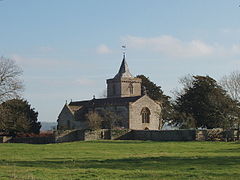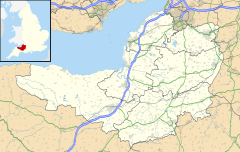West Camel
| West Camel | |
|---|---|
 Church of All Saints, West Camel |
|
| West Camel shown within Somerset | |
| Population | 459 (2011) |
| OS grid reference | ST578249 |
| District | |
| Shire county | |
| Region | |
| Country | England |
| Sovereign state | United Kingdom |
| Post town | YEOVIL |
| Postcode district | BA22 7 |
| Dialling code | 01935 |
| Police | Avon and Somerset |
| Fire | Devon and Somerset |
| Ambulance | South Western |
| EU Parliament | South West England |
| UK Parliament | |
West Camel is a village and civil parish in south Somerset, England, about 7 miles (11.3 km) north of the town of Yeovil. Situated either side of the River Cam it lies just south of the A303 and has a population of 459. The parish includes the hamlet of Urgashay.
Neighbouring villages include Queen Camel, and Bridgehampton.
The name "Camel" derives not from the animal but from the word "cantmeel" (or 'Cantmell' or 'Cantmel'), by which name West Camel was formerly known. "Cantmeel" itself derives from the words cant (ridge) and mael (bare). It has also been known as Camel Abbatis because of its association with Muchelney Abbey.
It is one of many sites in England identified as a possible setting of The Strife of Camlann, the final battle of King Arthur.
The earliest evidence of a settlement on the site dates to the tenth century in the form of the remains of a Saxon preaching cross dated to before 940 AD. The parish of West Camel was part of the hundred of Somerton.
The earliest written reference is dated 995 AD and takes the form of a grant by Aethelred II of the village to the monks of Muchelney Abbey. A 15th century tithe barn held produce for the grange of Muchelney Abbey.
There are earthworks 100 and 250 metres north of Downhead Manor Farm, showing the site of houses, possibly including a manor house, tracks and a fish pond. The settlement existed before the Norman conquest and was abandoned by the late 18th century.
...
Wikipedia

